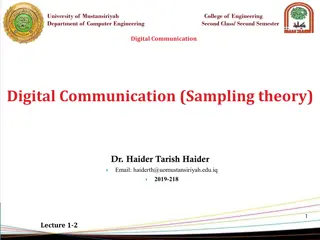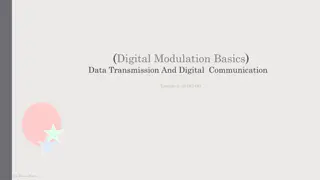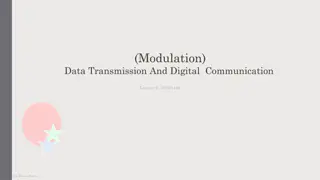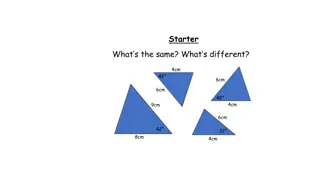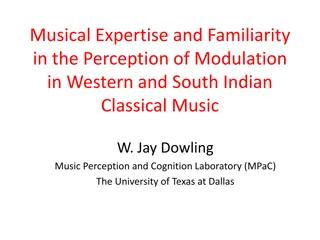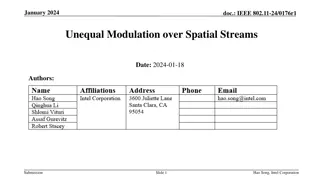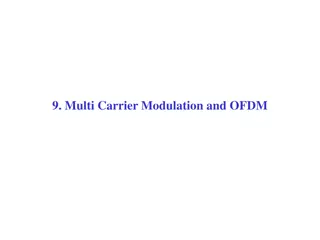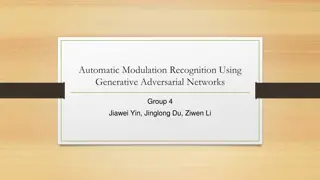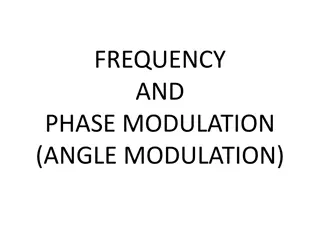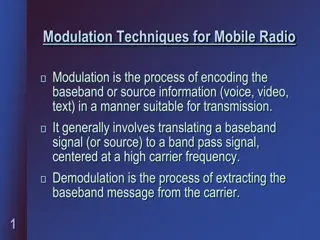
Understanding Angle Modulation in Data Communication
Angle modulation in data communication involves mixing analog data signals with high-frequency carrier signals by varying the angle of the phasor according to the modulating signal. This method offers advantages over amplitude modulation, such as reduced noise interference, though it requires a complex receiver for signal extraction. Analog modulation is evolving towards digital schemes in modern communication systems, where digital communication has become predominant.
Download Presentation

Please find below an Image/Link to download the presentation.
The content on the website is provided AS IS for your information and personal use only. It may not be sold, licensed, or shared on other websites without obtaining consent from the author. If you encounter any issues during the download, it is possible that the publisher has removed the file from their server.
You are allowed to download the files provided on this website for personal or commercial use, subject to the condition that they are used lawfully. All files are the property of their respective owners.
The content on the website is provided AS IS for your information and personal use only. It may not be sold, licensed, or shared on other websites without obtaining consent from the author.
E N D
Presentation Transcript
DATA COMMUNICATION PRINCIPLES : Angle Modulation
Angle Modulation A second mechanism of mixing the analog data signal with a high frequency carrier signal is to generate the carrier signal by varying the angle of the phasor according to m(t), the modulating signal. In other words, if the carrier signal was then the modulated signal will be either or depending upon whether m(t) is used to change the phase or the frequency of the carrier, respectively. Sometimes, we multiply m(t) or its integral by a factor to vary the extent of modulation. Due to this reason is called the index of modulation. When the phase of the modulated carrier is the resulting angle modulation is also called as the phase modulation. Alternatively, when the phase of the resulting modulated carrier is the modulation is called the frequency modulation because the differentiation of has the units of radians, the angular frequency. In other words, frequency of the modulated signal in Figure 3-12 shows an example of phase modulation.
As noted from Figure 3-12, the amplitude of the carrier is not affected in phase (and frequency) modulation. This is a big advantage of angle modulation over amplitude modulation and results in reduced noise interference. The interference most easily occurs in the amplitude and least affects the carrier angle. The cost of this noise reduction property of angle modulation comes in the form of a complex receiver required to extract the modulating signal from the carrier phase. A simple receiver, such as an envelope detector is not usable in this case. Instead, the angle or the frequency of the received signal has to be estimated to extract the signal from it. The analog modulation has ruled the world of broadcast communications ever since its inception. The latest trend is, however, towards the more robust digital modulation schemes. In data networks and wireless communications systems, digital communications has almost replaced analog to the point that analog modulation is not even considered as an option in many new systems.
REFERENCES Ahmad A. - Data Communication Principles. For Fixed and Wireless Networks Cornelius T. Leondes - Database and Data Communication Network Systems, Three-Volume Set_..-Academic Press





